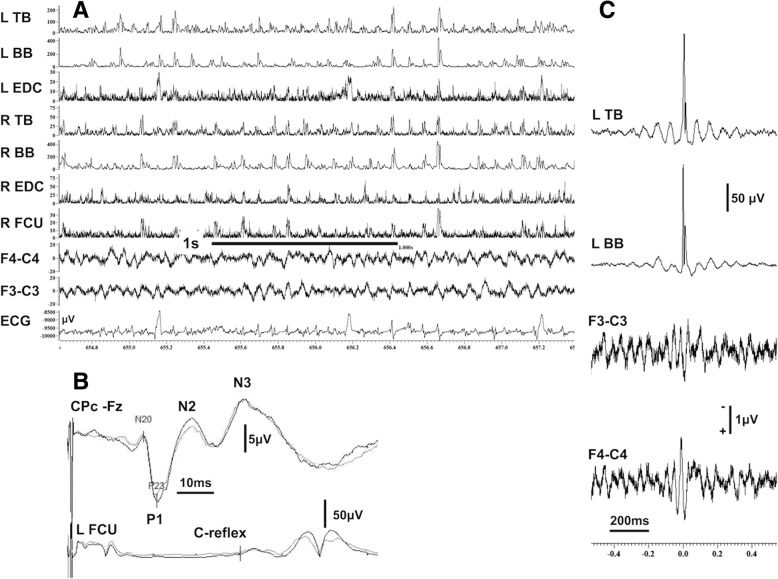Fig. 1.
a EEG/EMG polygraphy showing the irregular myoclonic tremor. The most prominent myoclonic jerks involve synchronously both upper limbs and proximal and distal muscles. b SEPs from the same patient showing “Giant” cortical potentials and C-reflexes indicating cortical hyperexcitability and stimulus sensitive myoclonus. c JLA for the same patient from the left upper arm. There is a biphasic, positive/negative, spiky transient preceding by few milliseconds the rectified and averaged myoclonic EMG discharges (960 sweeps were averaged). The cortico-muscular latencies are shown at a slower sweep time in the relevant Additional file 1. APB = abductor pollicis brevis, BB=Biceps brachii, FCU = flexor carpi ulnaris, EDC = extensor digitorum communis, JLA = jerk-locked averaging, SEP = somatosensory evoked potentials, TB = triceps brachii

